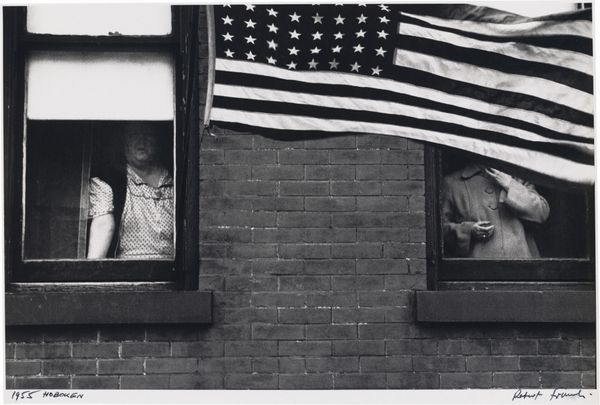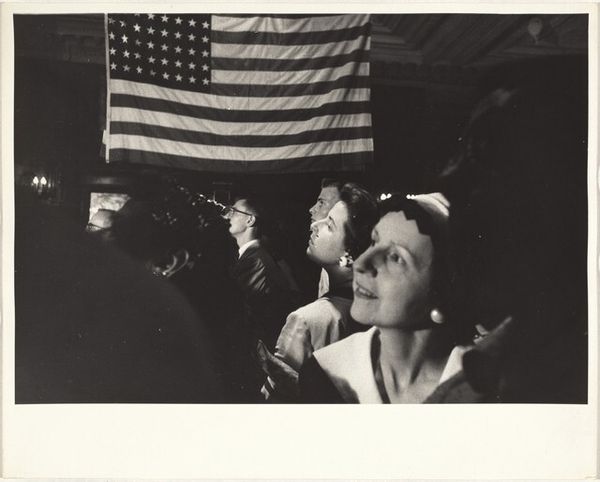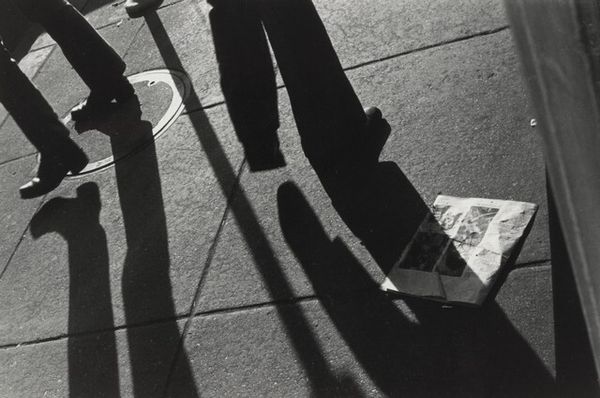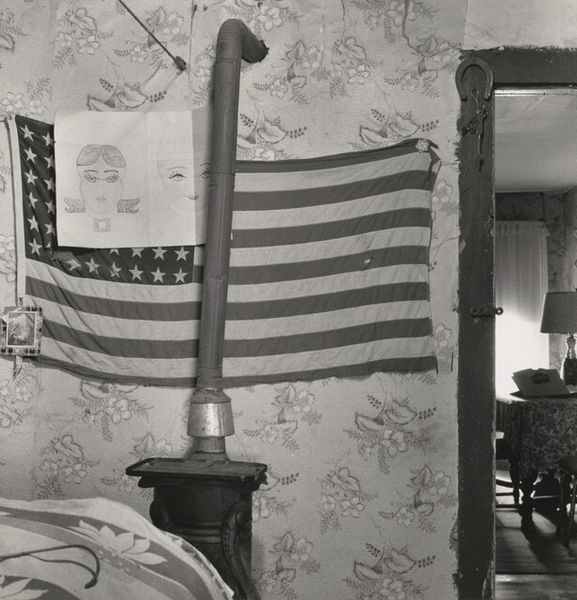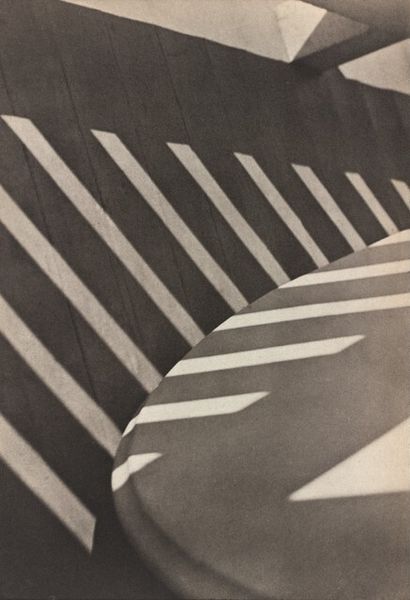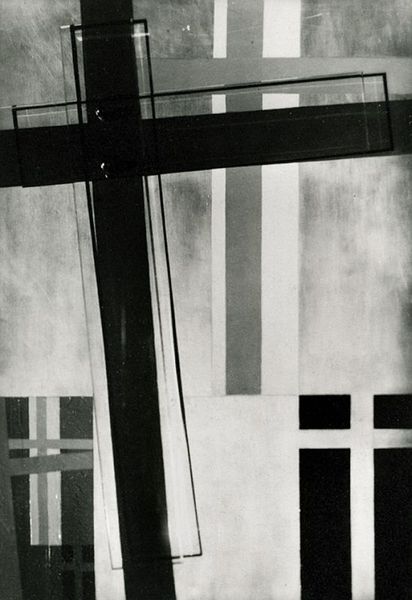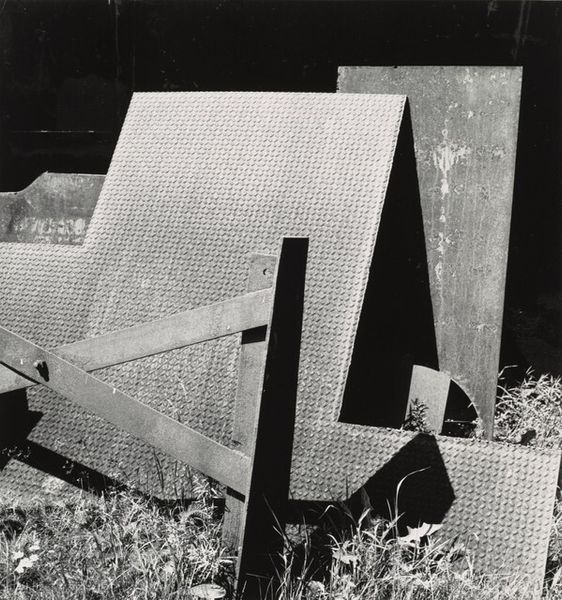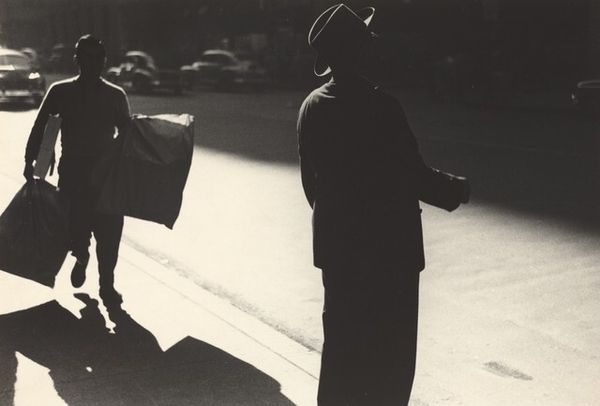
photography
#
conceptual-art
#
sculpture
#
social-realism
#
street-photography
#
photography
#
pop-art
Dimensions: image/sheet: 24.4 × 17.8 cm (9 5/8 × 7 in.) mount: 45.4 × 35.6 cm (17 7/8 × 14 in.)
Copyright: National Gallery of Art: CC0 1.0
Curator: What strikes me immediately is the composition – the sheer repetition of forms and the stark contrast. A powerful image. Editor: Indeed. We're looking at "Days of Protest," a 1966 photograph. At first glance, the monochrome treatment and the array of flag-draped coffins evokes a solemnity that really lingers. Curator: The formal arrangement directs the gaze. Notice how the strong diagonal of the coffins leads to the seated figure, offset just so. The interplay between the geometry of death and that lone individual creates a sense of stark alienation. Editor: Right, and I wonder about the material conditions surrounding the image's creation. Think of the textiles here. Each flag had to be produced, handled, placed. These objects embody labor and stand as commodities, and ultimately, they signify loss. The scale hints at potentially a mass production. Curator: Yes, a conceptual reading reveals so much. Consider the flag itself, its inherent symbolism, laid upon the brutal reality of conflict and mortality. The semiotics here point towards disrupted ideals, or perhaps a critique of state power? Editor: Certainly. This wasn’t just about national identity—it was probably mass produced materials representing the realities faced by those who made, supplied, or perhaps became concealed beneath them. I’d love to know more about how and where those coffins and flags were manufactured. The material circumstances are key. Curator: A photograph of powerful symmetry, heavy with ideological implications and open to different interpretations even 60 years on. Editor: Agreed. It forces us to grapple with how objects – in this case, potent symbols of nationhood – can become both banal commodities and heavy markers of tragic consequences. Food for thought indeed.
Comments
No comments
Be the first to comment and join the conversation on the ultimate creative platform.
